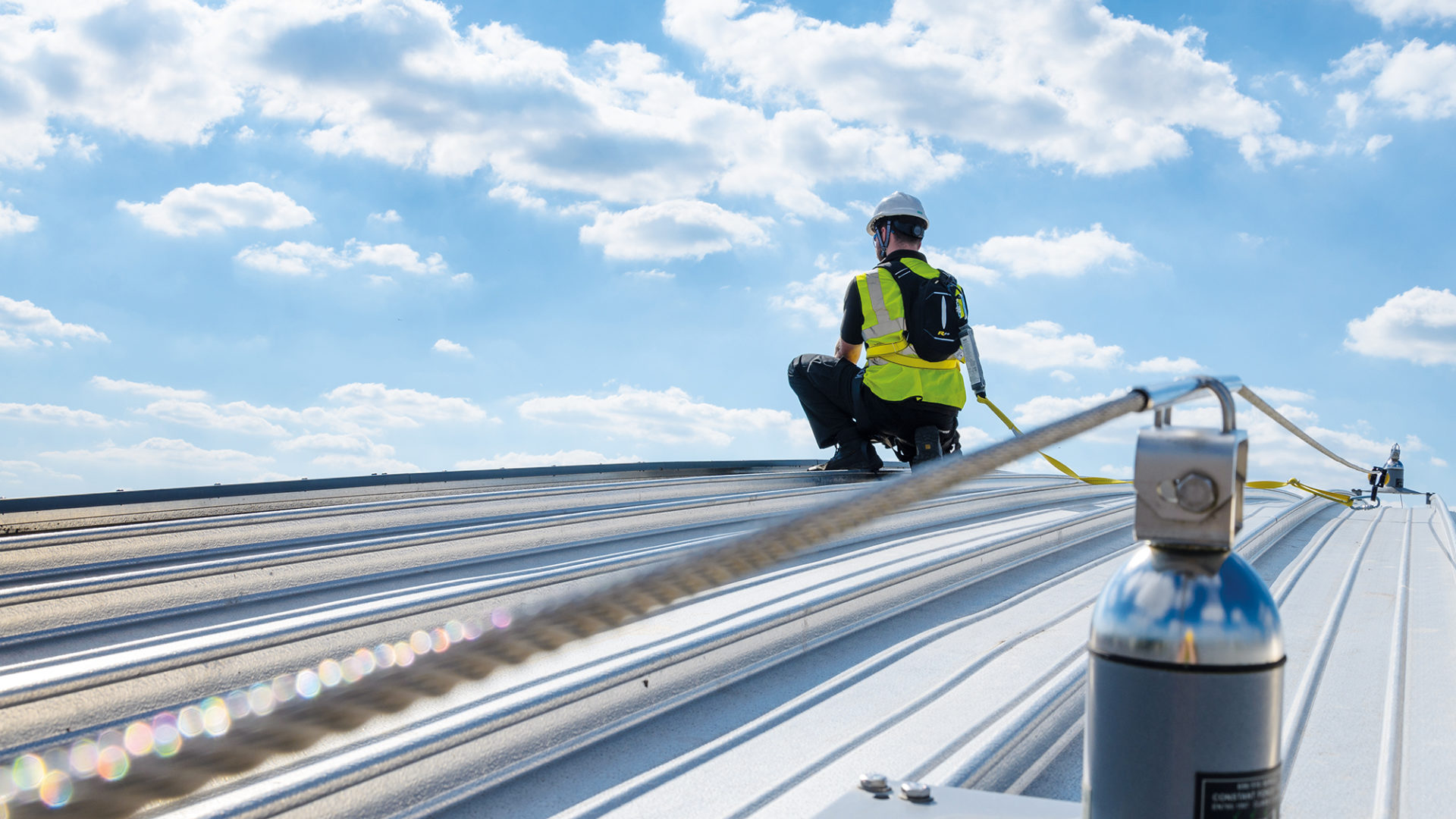
This CPD, in association with MSA Safety, explains what principal contractors need to be aware of to ensure robust fall protection in building construction. By Stuart Pierpoint.
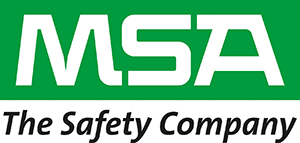
What you will learn in this CPD
- The legislation concerning working at height
- The hierarchy of fall protection
- The main personal fall protection systems
The responsibilities of a contractor regarding fall protection are set out in the Health and Safety Executive’s (HSE) work at height guidance and the Work at Height Regulations 2005 and its 2007 amendment. These regulations instruct employers to take preventative measures “so far as is reasonably practicable” to prevent falls when work is carried out at height.
The recently introduced Building Safety Act 2022 assigns principal contractors strict obligations to ensure that all building work that is carried out is compliant with relevant requirements, including planning, managing, coordinating and monitoring work. Under the Act, contractors responsible for any of the above works need to consider all other work which directly relates to the building work and report any building regulation compliance concerns to the principal contractor or principal designer.
Getting the balance right
In deciding what is “reasonably practicable” and the most practical and effective solutions for a particular building, contractors will want to know where the right balance lies. ‘Innovation versus proven systems?’ is the kind of question that principal contractors ask themselves every day as they grapple with the challenge of fall protection safety.
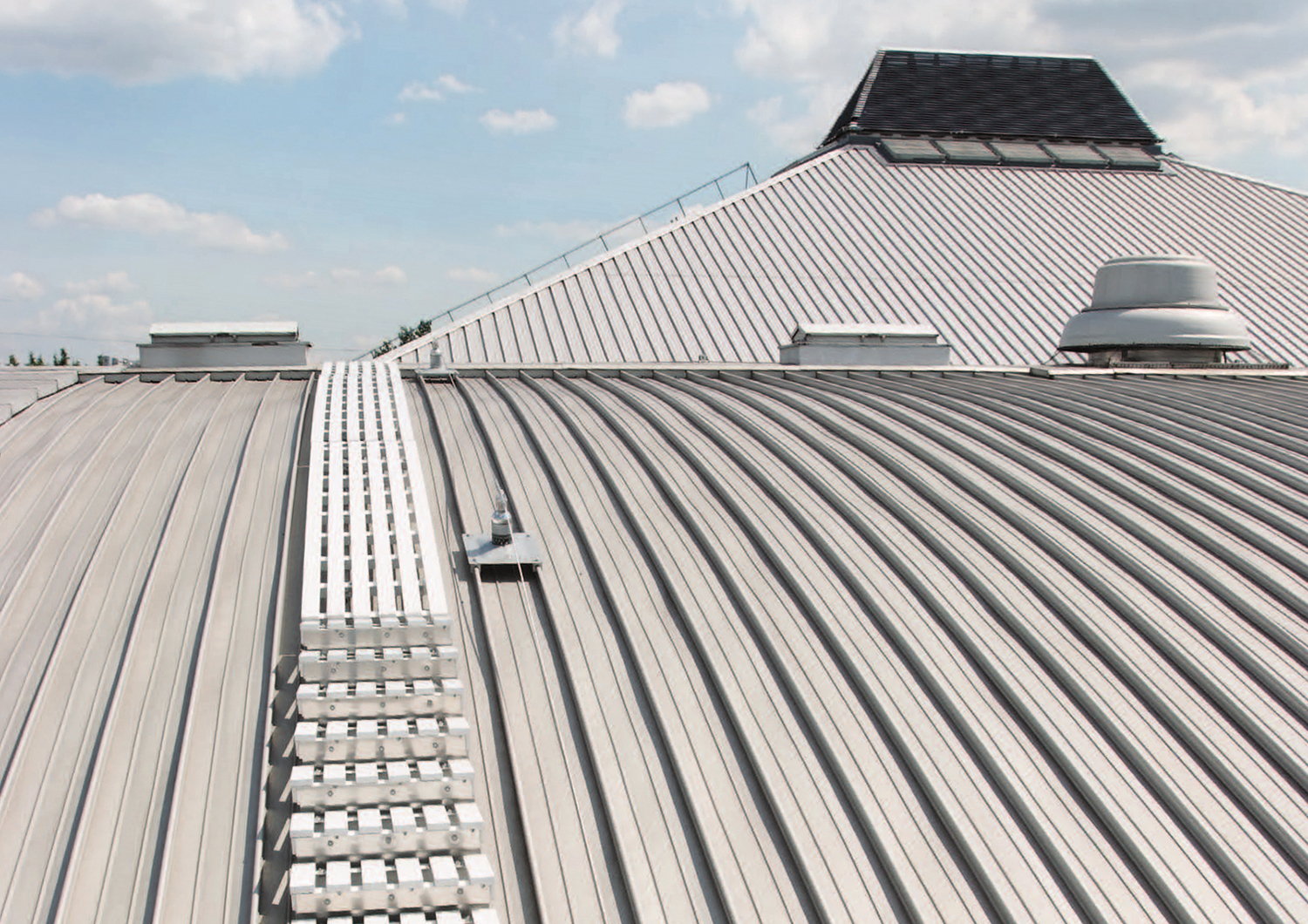
Although aesthetics are important, fall protection systems that have longevity are a must. Budgets are also an essential consideration. Above all, the risks of working at height must be kept to the absolute minimum, getting safety right from business, ethical and moral perspectives.
Existing approaches in place save contractors from having to choose between these options while enabling the highest standards of safety when it comes to fall protection.
Fall protection hierarchy
Safe access considerations should always follow the hierarchy of fall protection.
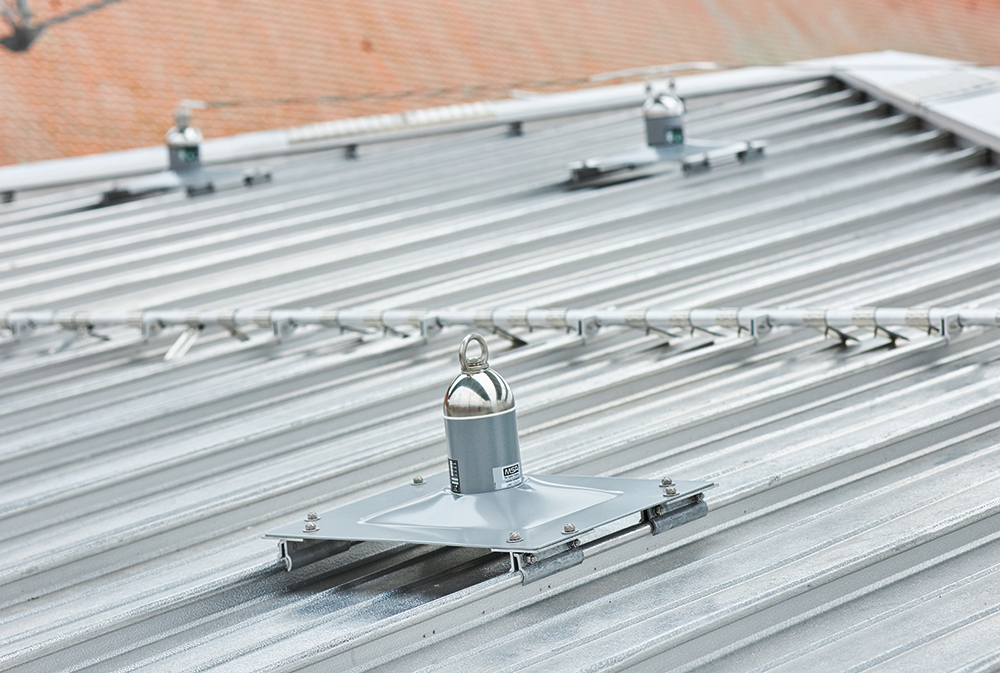
MSA Safety’s Constant Force Post
MSA Safety’s Constant Force Post is a fall protection solution that helps protect both the worker and the roof from the sudden energy of a fall.
It has been tested on representative roof types and used in iconic buildings such as the Blackpool Tower, London Bridge, New York’s Grand Central Station and Qatar Airport.
The patented star-wheel technology Transfasteners allow the system users to walk freely along the entire rooftop lifeline system. Every single point of the system absorbs energy via the patented Constant Force technology in case of a fall.
Image: A ridge system uses additional single-point anchor posts to gain access to roof corners
This means first eliminating any fall hazard wherever possible. Where this is not feasible, collective fall protection should be explored – for example, a guardrail that acts as a physical barrier between a worker and a hazard. Installing collective fall protection will allow less-trained users to access a rooftop without the need for personal protective equipment such as harnesses and lanyards.
If collective fall protection is not possible, perhaps due to planning constraints, rights to light or viewing corridors, the next option is to specify a personal fall protection system. There are two kinds: a fall restraint system and a fall arrest system.
With a fall restraint system (the preferred option), workers use fall protection equipment – such as an anchor point, harness or fixed-length lanyards – that prevents them from reaching the hazard.
If a fall restraint system isn’t possible, the alternative is to specify a fall arrest system. This allows trained workers wearing specialist equipment to access the hazard safely with the reassurance that if they fall, their fall will be ‘arrested’ by the equipment they are wearing.
Systems available
There are two main options when considering a personal fall protection system, namely a perimeter system and a ridge system. With a perimeter system, users have full movement around the perimeter while remaining in restraint at all times.
With a ridge system, workers use additional single-point anchor posts to gain access to roof corners. The ridge system is suitable for both fall restraint solutions and fall arrest solutions.
Both systems should be tested for fall arrest in case of misuse.
Test standards
Once decided what kind of fall protection system is most suitable for a particular structure, the next challenge is choosing a system that meets the right test standards. This means specifying a system that meets both the BS EN 795:2012 standard (which superseded the previous edition from 1997) for single-user anchor devices and the PD CEN/TS 16415: 2013 standard for multi-user anchor devices.
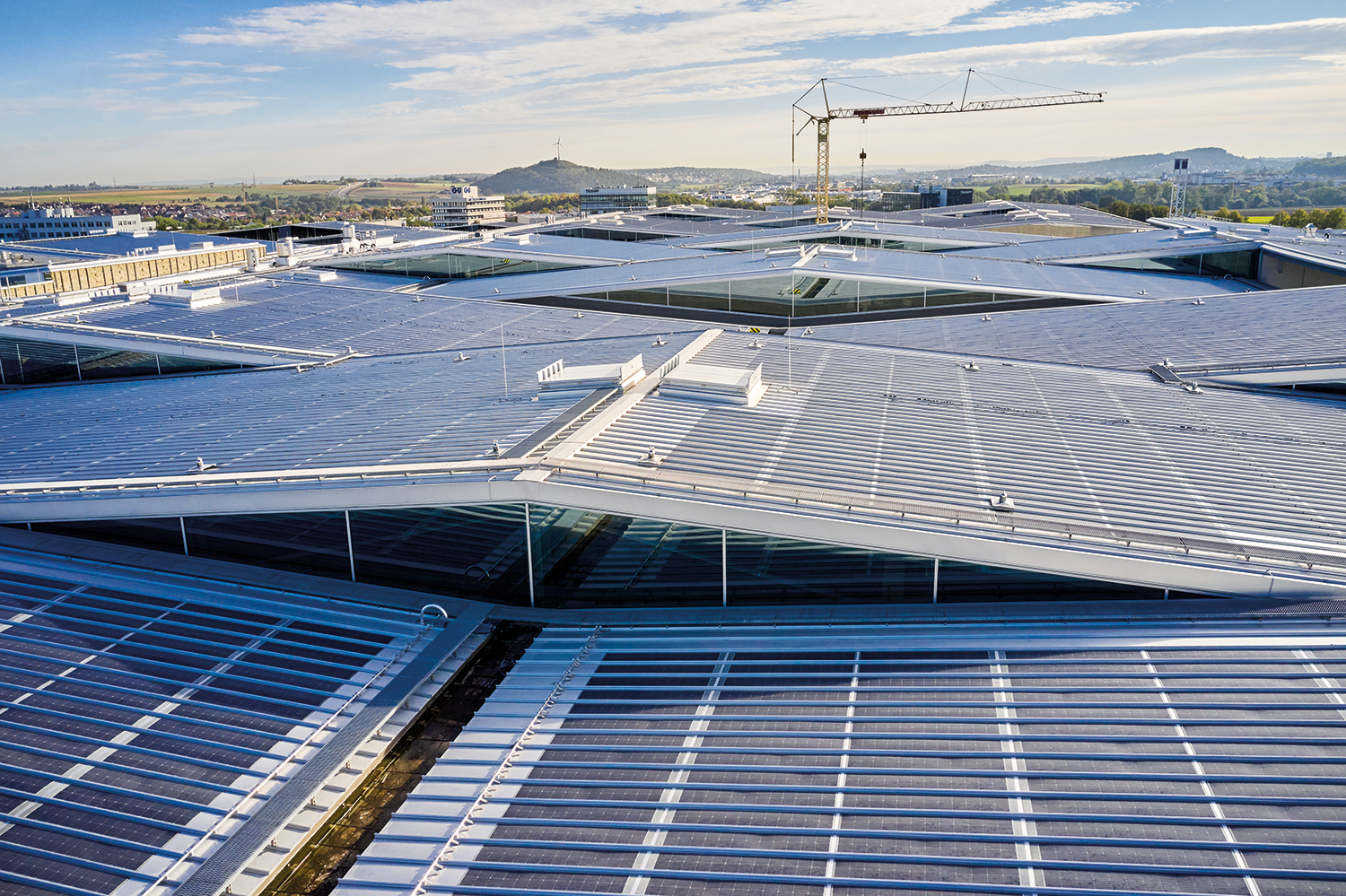
There are a few things to be aware of regarding test standards. It’s not advisable to assume that a system tested against the old standard from 1997 will be capable of meeting the revised, up-to-date version. Systems that claim to be tested against current standards should be checked if they have been tested against the 2012 standard as they may only meet the 1997 version.
It is also necessary to check that the system has been tested on the structure or base material it will be used on, for example, tested using UK standard BS 8610. This is important because anchors perform differently on different materials and roof structures when force is exerted.
In conclusion, things should be kept in perspective. When trying to achieve the right balance at the time of constructing a building that is both aesthetically pleasing and safe to work on at height, it is important to remember those key words from the regulations: “so far as is reasonably practicable”.
Contractors can stay compliant and keep workers safe if they know their responsibilities, take them seriously and partner with a trusted supplier of fall protection systems.
Stuart Pierpoint is a specification sales manager at MSA Safety.





